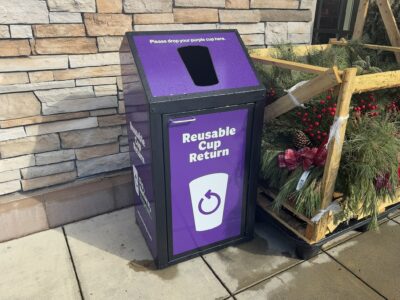Recently, New York’s city government voted to require that stores charge five cents for all plastic and paper bags currently given away free to customers. According to J. David Goodman of the New York Times:
“The City Council voted 28 to 20 on Thursday to require certain retailers to collect a fee on each carryout bag, paper or plastic, with some exceptions. Mayor Bill de Blasio has expressed support for the measure. Passage of the bill came after two years of debate and at least one other attempt by the city’s elected officials to charge a fee or tax on disposable bags. The legislation, modeled on similar laws in California and Washington, D.C., encountered an unusual amount of resistance and resulted in what council members said was one of the closest votes in years…To the bill’s proponents, the goal is not to collect the fee but to nudge New Yorkers into bringing their own reusable bags when they shop. Other cities that have introduced similar fees have seen a sharp drop in the use of plastic bags, petroleum products that can linger in landfills for centuries. In New York City, the Sanitation Department has said it collects roughly 10 billion single-use plastic bags a year.”
The new law is not designed to ban the bag, but to make people think for a moment when they take one from a store while shopping. In a city like New York, where people are in constant motion and most of that movement is not in private cars, many people carry backpacks and other permanent bags most of the time. But some of the things they buy will need to spend a few hours in transit with them, and so people have gotten into the habit of taking extra packaging to protect what they purchase. They will be free to do that under this law, but now they have to take a moment to think and decide if it’s worth a nickel.
That thought will probably reduce the use of plastic and paper bags dramatically, because for many customers and store clerks, the act of charging for something and bagging it is a type of conditioned reflex. It is an automatic behavior that damages the environment, but with a few seconds of thought and a reason to reject the bag, the automatic action is replaced by something else.
The effort is not to end consumption, but to reduce thoughtless, unnecessary consumption. This is the type of action we need to take in many consumption decisions that are made for us or are virtually automatic bits of ingrained behavior. In the drive to create a more sustainable city and economy, we need to identify other examples of casual and thoughtless consumptive behavior and see if there are ways to either reduce the environmental impact of whatever is consumed, or reduce the consumption itself.
Beverage containers are another area of casual unthinking consumption. When I was growing up in a row house in Brooklyn, we had milk delivered in glass bottles to our doorstep. We would wash out the used bottles and place them back in the milk box for pick up when the next bottles of milk were delivered. Soda and seltzer was also picked up and delivered. This business model was obviously not as efficient or as profitable as the model that replaced it—the one-time use of paper or plastic milk cartons and the one-time use of glass, metal or plastic beverage containers. But perhaps in the age of Amazon, Fresh Direct and similar versions of store-less commerce, it is time to reexamine this long forgotten method of two-way commerce. When the grocery or FedEx truck comes to deliver food and other stuff, they could also pick up reusable containers and packaging.
It is also time to think about raising the deposit on beverage containers in New York and to extend the fee to noncarbonated beverages. At a minimum, it would increase the income of poor people who collect discarded bottles and maybe it would cause more people to return the bottle for deposits instead of throwing them away. The five-cent deposit was set in 1982, over three decades ago, and these days a nickel just doesn’t buy what it used to buy. At least New York State has a bottle bill; forty American states don’t. States with bottles bills include California, Connecticut, Hawaii, Iowa, Maine, Massachusetts, Michigan, New York, Oregon and Vermont. The rest are content to recycle through regular waste pickup or to use the bottles and then dump them in a hole in the ground.
The idea of a circular economy where resources are used and then recycled is central to the creation of a renewable resource-based economy. While the reduction and eventual elimination of fossil fuel use is a key element of such an economy, so too are the public policies and public-private partnerships needed to collect and reuse discarded products and packages.
Bag bills and bottle bills can help develop these capacities. In most of the United States, these ideas have not taken hold and are generally seen as unneeded government intervention in the free market. But the business model of one-way delivery and use has increased the public’s waste management bill and offloaded the full cost of many products from the product’s consumer to the broad public. The home delivery of milk and soda might actually be competitive with one-way sales in supermarkets if the cost of disposal was included in the price of the product. Failing that, deposits and regulations can provide incentives that will reduce the waste stream.
New York City’s plastic and paper bag fee is a significant step forward in the effort to educate the public about waste. This November, California’s statewide plastic bag ban will be voted on in a referendum. As you might expect, there is considerable opposition by bag manufacturers to California’s proposed ban. The New York City Council also dealt with considerable pressure brought by industry and merchants. This helps explain why these regulations are so rare. New York City’s leadership may not always push hard on environmental issues, but they recognize that more effective waste management can reduce the cost of doing business in this expensive city, making it a little easier to attract new businesses.
If we are to develop a renewable resource-based economy, we will need to ensure that what we “use up,” as fuel and other consumables, is either based on solar power or self-generating processes such as photosynthesis. The consumables that remain based on nonrenewable finite resources need to be collected for reuse. This cycle of production, consumption, collection and recycling is what some have termed the circular economy. It won’t work for everything, but to the extent it can be established, it will greatly facilitate the development of a sustainable economy. Renewable resources and the circular economy together can reduce environmental impacts while facilitating economic growth.
New York City’s bag bill is a small piece in this important puzzle. It influences the attitude and behavior of consumers and merchants. It helps develop the organizational capacity needed to reduce unnecessary consumption. New York City’s elected leaders took this step despite intense opposition and deserve our thanks for acting to preserve our planet.



